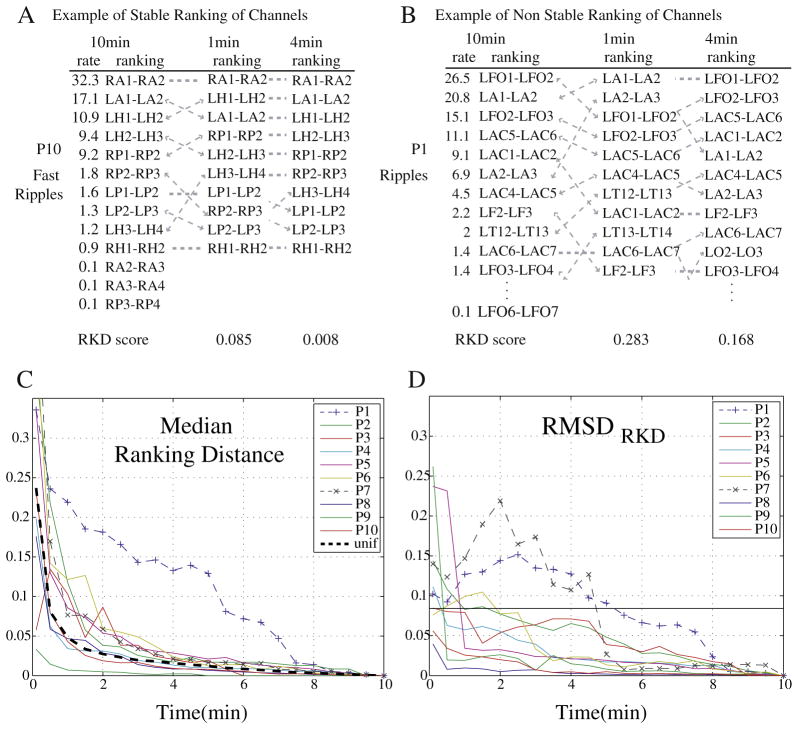Fig. 3.
The Ranking Distance (RKD) measures the difference in ranking for different intervals. Top: Example of difference in ranking and corresponding RKD scores, for 1 min and 4 min intervals. (A) Example of a stable ranking (patient P10 and fast ripples). (B) Example of non-stable ranking (patient P1 and ripples). Bottom: (C) Median RKD (across starting points and type of event) for each patient when comparing with the ranking of channels for the 10-min interval. (D) RMSDRKD of the RKD score when comparing the obtained score for each interval with the corresponding RKD score for a uniform distribution. Patients with a dashed line and a symbol (+ or ×) have a RMSDRKD(t ≥ 5 min) > thRMSDRKD. The thRMSDRKD equals twice the RMSDRKD for all uniform distributions at 2-min interval. A 10-min interval is considered as the “gold” standard.

